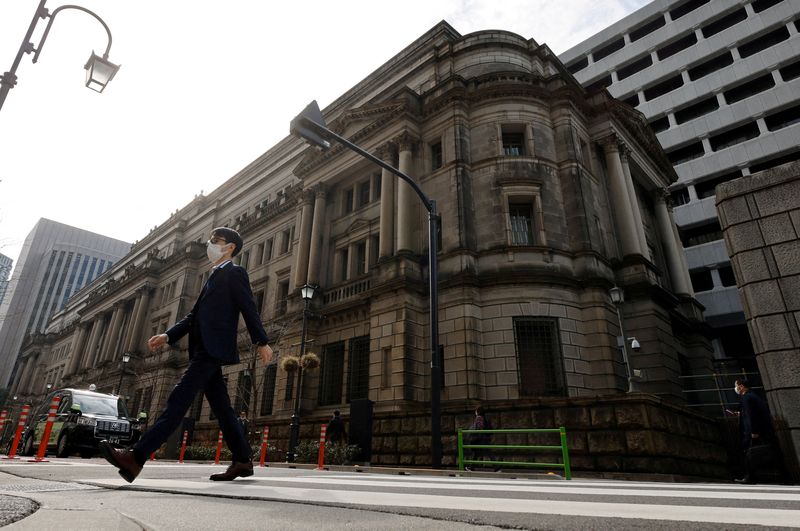By Jamie McGeever
(Reuters) - A look at the day ahead in Asian markets from Jamie McGeever, financial markets columnist.
Never underestimate the Bank of Japan's ability to move markets.
Just as the dollar's rally appeared to be accelerating and worries over Asian currency weakness deepening, BOJ governor Kazuo Ueda indicated a possible shift away from a negative interest rate policy, perhaps before the year is out.
Ueda's comments ignited the Japanese Government Bond and currency markets - the yen scored its biggest rise in two months and the 10-year JGB yield leaped to its highest in almost 10 years, scaling 0.70% for the first time since January 2014.
Analysts at Barclays reckon BOJ officials could flesh out more of their thinking at next week's policy meeting, while Deutsche Bank economists radically changed their BOJ forecasts.
They now expect the central bank's 'yield curve control' policy to end in October, compared with April 2024, and for the negative interest rate policy to end in January 2024, versus December 2024.
The prospect of a radically different - that is, far more hawkish - monetary policy stance in the world's third largest economy has reverberations far beyond Japan's domestic markets, especially in foreign exchange.
Investors bearish on Asian currencies, partly on the view that continued weakness in the Chinese yuan will spur a domino effect of competitive FX depreciation across the continent, may have to think twice.
Most Asian currencies on Monday rose against the dollar, which posted its biggest one-day decline in two months. The main exceptions being the Indonesian rupiah and Philippine peso, which were little-changed on the day.
Of course, the BOJ may stick to the cautious long game it has been playing for years, and the hawkish flurry of repricing Japanese assets and Asian currencies will quickly dissipate. But for now, there is much more two-way risk in the market and investors are taking Ueda's words at face value.
Beyond the Japanese policy drama, investors will also have the latest Indian inflation and industrial production data, and Australian business and consumer sentiment figures to digest on Tuesday.
Annual consumer price inflation in India is expected to have eased in August to 7.00% from a 15-month high of 7.44% in July. But that would still be above the upper end of the Reserve Bank of India's 2% to 6% target for a second consecutive month.
The rupee has steadied in recent sessions but last week hit a record closing low against the dollar. The currency is getting little support from the interest rate outlook - economists currently expect the RBI to keep rates on hold then start easing policy the second quarter of next year.
Here are key developments that could provide more direction to markets on Tuesday:
- India inflation (August)

- Australia consumer sentiment (September)
- Bank of Korea monetary policy meeting minutes
(By Jamie McGeever; Editing by Josie Kao)